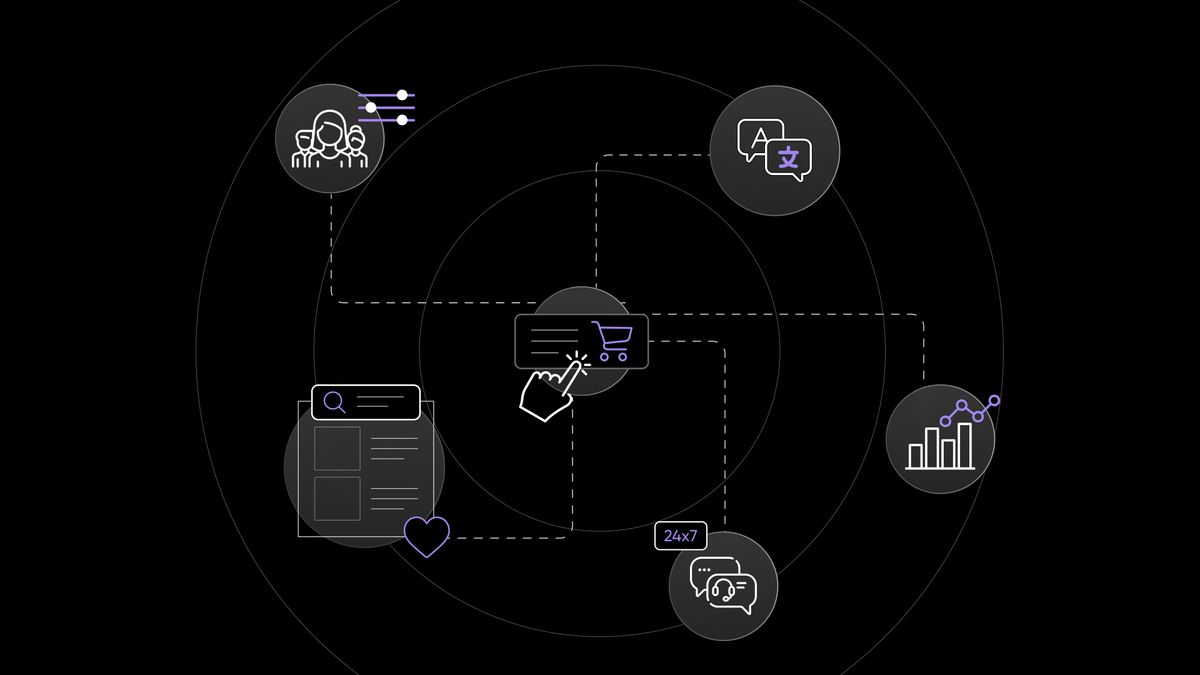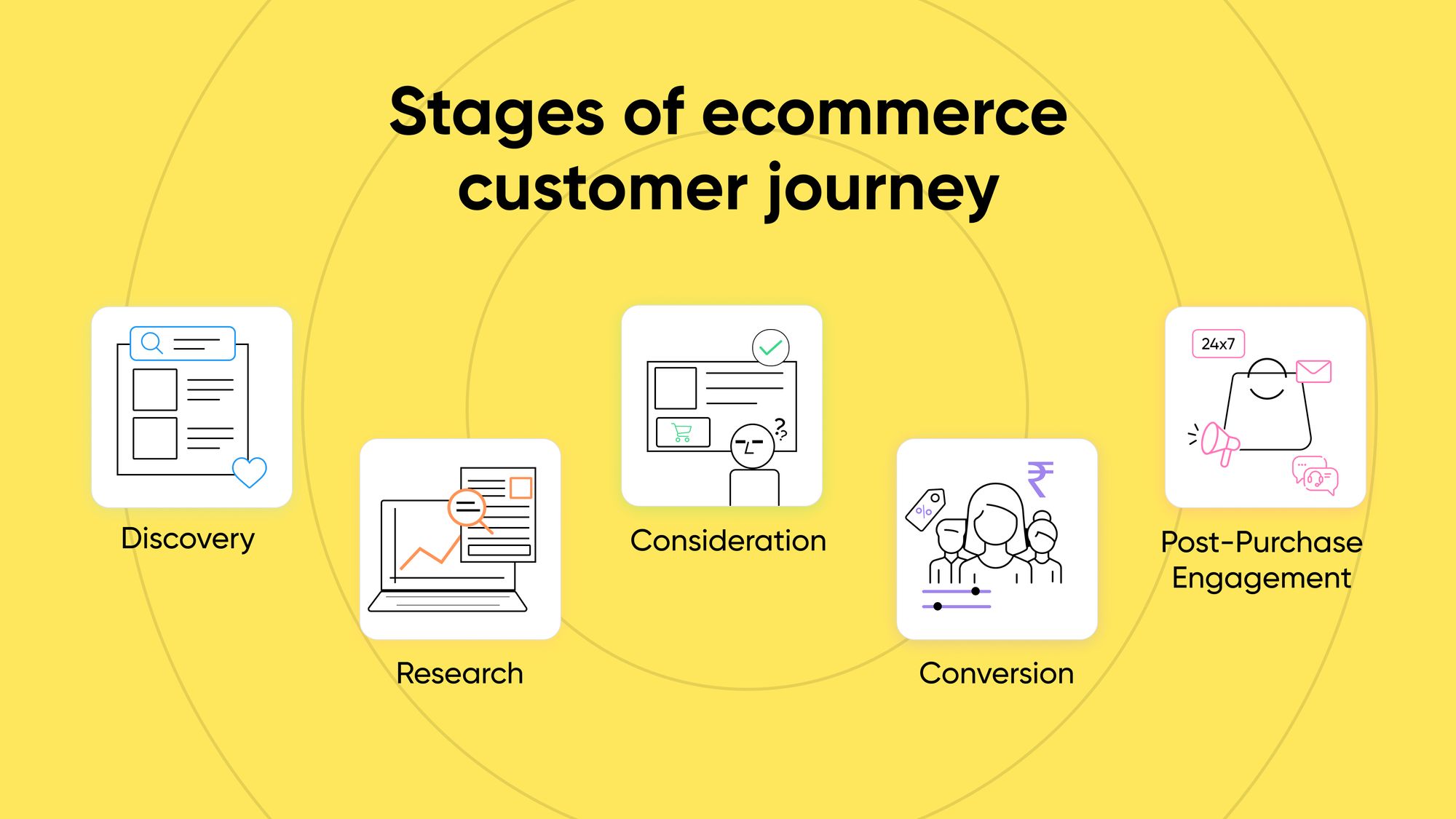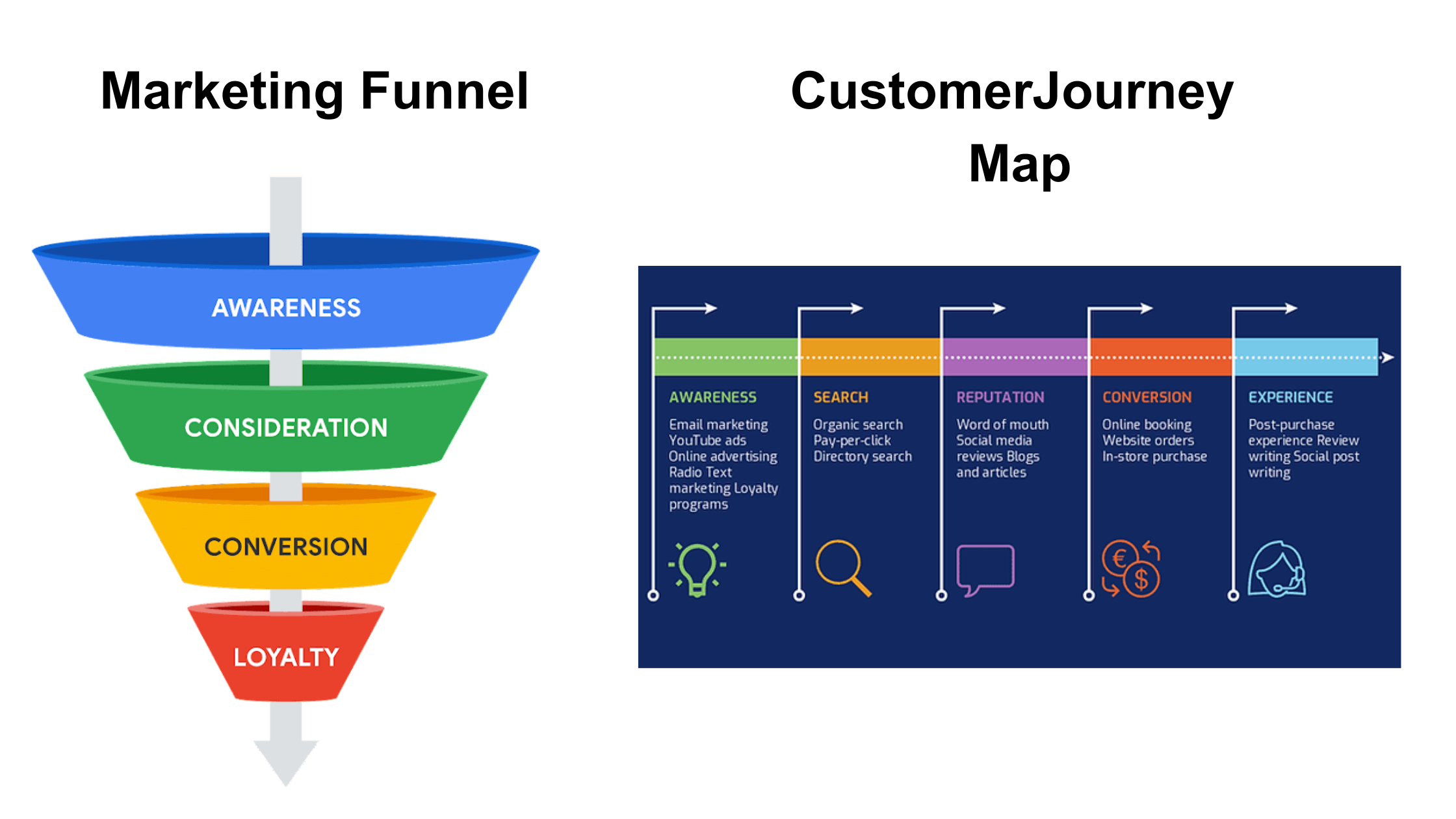Improve your E-commerce Customer Journey using AI
Explore AI-powered e-commerce customer journey mapping, decoding stages, and crafting compelling strategies. Embrace Manifest AI to navigate complexities, personalize experiences, and build lasting customer relationships.

Creating a smooth and engaging customer journey is crucial for any e-commerce business. AI technology can play a significant role in enhancing this experience. In this blog, we'll explore how AI tools can improve various stages of the customer journey, from personalized recommendations to efficient customer support. By leveraging AI, you can make every interaction with your customers more meaningful and satisfying, ultimately driving loyalty and boosting sales.
Let's dive into practical ways to use AI to elevate your e-commerce customer journey.
Importance of Customer Journey Mapping
The importance of customer journey mapping can be highlighted through the following key points, based on numeric data and results:
- Gain valuable insights into customer behavior and preferences, resulting in a significant increase in conversion rates by 30%.
- Identify pain points and areas for improvement within the customer journey, leading to a remarkable reduction in customer complaints by 40%.
- Enhance overall customer satisfaction and loyalty, resulting in an impressive 25% increase in customer retention rates.
- Effectively address customer needs and preferences, leading to a substantial decrease in bounce rate by 15%.
- Optimize marketing strategies by leveraging data-driven insights, resulting in a remarkable improvement of 20% in marketing campaign return on investment (ROI).
These data-backed points emphasize the significance of customer journey mapping in driving business growth and improving customer experiences.
Simplifying Customer Journey Using AI
With the advent of AI technology, businesses can now enhance the e-commerce customer journey by leveraging data-driven insights, personalized recommendations, and real-time support with some exciting AI-driven ecommerce tools. Explore the concept of the e-commerce customer journey to unlock greater success in the digital landscape.
Stages of the Customer Journey in E-commerce

Discovery: Overcoming the overwhelming choices
Whether it's an omnichannel or multichannel business, every customer journey map commences with the critical stage of discovery, where potential customers are exposed to an overwhelming array of products and brands. AI comes to the rescue by enabling businesses to offer personalized recommendations tailored to individual preferences, helping customers navigate through the sea of options with ease.
Research: Guiding customers in their decision-making process
During the research phase, customers seek information, compare products, and weigh their options. However, the abundance of data can often lead to confusion and decision paralysis. AI-driven chatbots and virtual assistants provide real-time support, addressing customer queries, offering product insights, and guiding customers in their journey through the decision-making process.
Consideration: Unraveling customer preferences & expectations
As customers evaluate their options during their purchase journey, businesses need to understand their preferences and expectations to stand out in a competitive landscape. AI-driven sentiment analysis and review mining help businesses extract valuable insights from customer feedback, allowing them to gain a deeper understanding of customer sentiments, identify pain points, and make informed improvements.
Conversion: Boosting conversion rates with personalization
The conversion stage is where customers make their purchasing decisions. However, generic marketing strategies often fall short of capturing their attention. By leveraging AI, businesses can deliver personalized offers, dynamic pricing, and targeted promotions based on customer behavior and preferences. Machine learning algorithms analyze vast amounts of data, enabling businesses to predict purchasing patterns and tailor their offers for maximum impact on the customer journey.
Post-Purchase Engagement: Ensuring Customer Satisfaction and Loyalty
The customer journey extends beyond the purchase, as businesses strive to foster long-term relationships. AI-powered customer service chatbot systems play a vital role in providing proactive and personalized assistance, ensuring customer satisfaction, and fostering loyalty. Through AI-driven chatbots, email marketing campaigns, and recommendation engines, businesses can continue to engage customers, address their concerns, and offer relevant post-purchase experiences.
How does a Marketing Funnel differ from a Customer Journey Map?
The Marketing Funnel
The marketing funnel, also known as the sales funnel, is a linear model that illustrates the customer's progression through specific stages of the buying process. It typically consists of three key stages: awareness, consideration, and conversion. The funnel analogy represents how customers enter at the top, with a broader audience, and gradually move down, becoming more qualified leads and eventually making a purchase.
At the top of the funnel, the focus is on creating awareness and capturing the attention of a wide audience. Marketing efforts here aim to generate brand awareness, attract potential customers, and introduce them to the products or services offered. As customers move down the funnel, the focus shifts to nurturing leads, providing relevant information, addressing their concerns, and guiding them toward making a purchase decision.

The Customer Journey Map
On the other hand, a customer journey map provides a holistic view of the entire customer experience from the customer's perspective. It goes beyond the linear progression of the marketing funnel and takes into account all touchpoints and interactions a customer has with a brand across various channels and stages.
An e-commerce customer journey map captures the customer's emotions, motivations, and behaviors at each stage of their interaction with the brand. It helps businesses understand the customer's needs, pain points, and expectations, allowing them to tailor their marketing strategies and touchpoints to deliver a seamless and personalized experience.
Unlike the marketing funnel, which focuses primarily on the stages leading to a purchase, a customer journey map encompasses the entire customer lifecycle, including pre-purchase research, post-purchase support, and even advocacy or repeat purchases. It helps businesses identify opportunities for improvement, optimize customer touchpoints, and build long-lasting relationships.
Is the Ecommerce Journey Map for B2B & D2C Similar?
When it comes to the ecommerce journey map, there are differences between B2B (Business-to-Business) and D2C (Direct-to-Consumer) models. While there may be some similarities, it's important to understand the distinctions. Let's explore:
- Target Audience: B2B focuses on businesses as customers, whereas D2C targets individual consumers. The target audience's needs, behaviors, and purchasing processes differ significantly between these two models.
- Complexity of Sales Process: B2B transactions often involve complex sales cycles, multiple decision-makers, and longer lead times. In contrast, D2C transactions tend to have simpler processes with shorter decision-making cycles.
- Relationship Building: B2B relies heavily on relationship building and nurturing long-term partnerships. D2C, on the other hand, focuses on building brand loyalty through direct customer interactions and experiences.
- Purchase Volume: B2B transactions typically involve larger purchase volumes and recurring orders, while D2C transactions tend to involve smaller individual purchases.
- Decision-Making Factors: B2B purchases are driven by factors such as cost-effectiveness, functionality, and integration with existing systems. D2C purchases are influenced by factors like brand reputation, product quality, and personalized experiences. Although there may be some overlapping stages in the ecommerce journey map for B2B and D2C, the nuances in the target audience, sales complexity, relationship building, purchase volume, and decision-making factors require tailored approaches.
How to Improve the Ecommerce Customer Journey using Manifest AI?
Personalize the shopping experience
AI shopping assistants like Manifest AI can gather and analyze customer data, enabling businesses to personalize the shopping experience. By understanding individual preferences, purchase history, and browsing behavior, AI can recommend relevant products, provide tailored recommendations, and offer personalized assistance throughout the e-commerce customer journey.
Streamline product search and discovery
The best way to significantly improve the efficiency of product search and discovery is by implementing AI-driven chatbots. These assistants can understand customer queries, refine search results, and provide accurate and relevant product recommendations by leveraging natural language processing and machine learning algorithms. This helps customers find the right products quickly, reducing frustration and enhancing the overall journey.
Enable real-time support and assistance
Manifest AI helps you provide instant, real-time support to customers at every stage of the e-commerce journey. Through a GPT-powered chatbot, customers can ask questions, seek guidance, and receive immediate assistance without the need for human intervention. This improves customer satisfaction, resolves queries promptly, and boosts confidence in the purchasing process.
Multilingual Support
Manifest AI can understand English, Spanish, French, Dutch, and many more languages. It can simplify the purchase journey by offering intelligent suggestions. It can provide you favorable shopping experience by answering your queries in your language.
Continuously learn and adapt
The best feature is it can learn and adapt based on customer interactions and feedback. By analyzing customer preferences, behavior patterns, and transaction history, Manifest AI can continuously refine its recommendations and personalized offerings. This adaptive learning ensures that the customer journey evolves and improves over time, resulting in a more tailored and satisfying experience.
1. Install Manifest AI Shopify App
2. Customize its name, color, avatar, and personality.
3. Publish on your website
The Final Thoughts
In conclusion, leveraging AI customer journey mapping unlocks immense potential for businesses. By personalizing the shopping experience, streamlining product search, offering real-time support, simplifying checkout, and continuously learning and adapting, businesses can create seamless and satisfying experiences. Embrace the power of Manifest AI to navigate the complexities of e-commerce and build lasting customer relationships. Get ready to embark on a transformative journey where technology and customer-centricity converge for success in the dynamic world of e-commerce.

.png)
